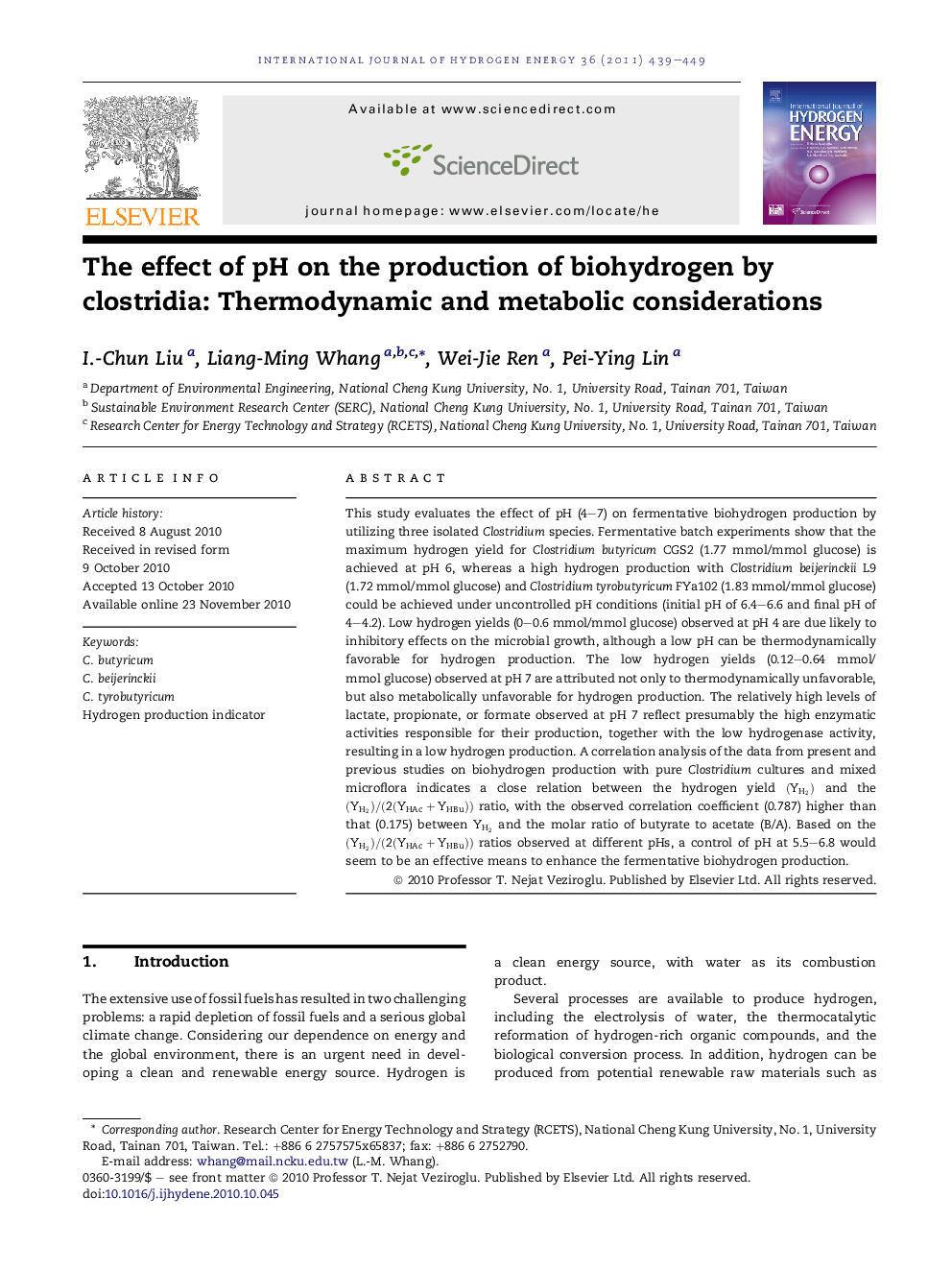| Article ID | Journal | Published Year | Pages | File Type |
|---|---|---|---|---|
| 1277794 | International Journal of Hydrogen Energy | 2011 | 11 Pages |
This study evaluates the effect of pH (4–7) on fermentative biohydrogen production by utilizing three isolated Clostridium species. Fermentative batch experiments show that the maximum hydrogen yield for Clostridium butyricum CGS2 (1.77 mmol/mmol glucose) is achieved at pH 6, whereas a high hydrogen production with Clostridium beijerinckii L9 (1.72 mmol/mmol glucose) and Clostridium tyrobutyricum FYa102 (1.83 mmol/mmol glucose) could be achieved under uncontrolled pH conditions (initial pH of 6.4–6.6 and final pH of 4–4.2). Low hydrogen yields (0–0.6 mmol/mmol glucose) observed at pH 4 are due likely to inhibitory effects on the microbial growth, although a low pH can be thermodynamically favorable for hydrogen production. The low hydrogen yields (0.12–0.64 mmol/mmol glucose) observed at pH 7 are attributed not only to thermodynamically unfavorable, but also metabolically unfavorable for hydrogen production. The relatively high levels of lactate, propionate, or formate observed at pH 7 reflect presumably the high enzymatic activities responsible for their production, together with the low hydrogenase activity, resulting in a low hydrogen production. A correlation analysis of the data from present and previous studies on biohydrogen production with pure Clostridium cultures and mixed microflora indicates a close relation between the hydrogen yield (YH2)(YH2) and the (YH2)/(2(YHAc+YHBu))(YH2)/(2(YHAc+YHBu)) ratio, with the observed correlation coefficient (0.787) higher than that (0.175) between YH2YH2 and the molar ratio of butyrate to acetate (B/A). Based on the (YH2)/(2(YHAc+YHBu))(YH2)/(2(YHAc+YHBu)) ratios observed at different pHs, a control of pH at 5.5–6.8 would seem to be an effective means to enhance the fermentative biohydrogen production.
